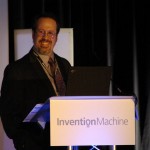Dec27
Soccer and Sockets: Connecting Common Practices to Common Needs
Point: Solve a ubiquitous problem by using a ubiquitous practice
Story: Four entrepreneurs found a way to generate free electricity in developing nations. The entrepreneurs – all women who had experience in developing countries – prototyped a soccer ball that “captures and stores energy during normal game play to be used later to charge batteries and LEDs,” said co-creator Jessica Lin. [1] The soccer ball, called sOccket, generates and stores energy with every kick and bounce. The ball looks like a regular soccer ball, but inside “there’s a magnet that goes back and forth through the inductive coil, which allows a current to be captured in a capacitor and electricity to be stored,” said co-creator Hemali Thakkar. [2] “About 15 minutes of kicking the ball allows us to use a single LED for three hours,” Thakkar said. After kicking the ball around, the person plugs their light, battery pack, cellphone or other small electrical gadget into a DC jack in one of the ball’s panels and enjoys the clean renewable power. A day of play can become a night of light.
The genius of the idea is that it takes a ubiquitous practice – soccer is the most popular sport in the world, especially in developing countries – and uses it to solve the common problem of the lack of electricity in those countries. The UN estimates that nearly 80% of people living in the 50 poorest nations have no access to electricity. By piggybacking electricity production onto the prevailing activity of soccer, the innovation lowers barriers to adoption. Customers don’t need to change practices to use the product.
The entrepreneurs got the inspiration for their idea from a dance floor in Rotterdam [3] which uses the energy of the dancers’ steps to power the lights. In the developing world, sOccekt-powered lights would provide an alternative to kerosene lamps, which 1.5 billion [4] people use today as a lighting source. Kerosene lamps sicken children through respiratory disease (breathing kerosene lamp fumes is the equivalent of smoking 2 packs of cigarettes a day) and produce carbon emissions equivalent to 38 million cars. [5] In contrast, sOccket produces light from the naturally renewable energy of soccer-players.
The invention, named one of the breakthrough innovations of the year by Popular Mechanics [6] will be distributed in a sustainable way as well. Rather than giving the ball away for free, which would ruin the existing businesses selling soccer balls in developing countries, local entrepreneurs in developing countries will assemble and sell the sOccekt balls themselves. This will help local economies while lowering the cost of the product.
Action:
- Find a common problem or need (e.g., lack of low-pollution lighting)
- Examine common practices or activities of the region/country/customerbase (e.g., soccer)
- Innovate at the intersection of the gap and the existing activity (e.g., energy production from playing soccer) to maximize adoption.
- Look for other ways to enhance adoption by using local resources (e.g., employing local entrepreneurs for manufacturing and distribution)
Sources:
[1] sOccket: Soccer Ball by Day, Light by Night. http://news.discovery.com/tech/soccket-soccer-ball-by-day-light-by-night.html
[2] Electricity Onto the Field http://www.theatlantic.com/technology/archive/2010/11/soccer-ball-brings-off-grid-electricity-onto-the-field/65977/
[3] Partying Helps Power a Dutch Nightclub http://www.nytimes.com/2008/10/24/world/europe/24rotterdam.html?_r=3&scp=1&sq=dance%20club%20electricity&st=cse
[4] Harnessing the Power of Soccer http://www.loe.org/shows/segments.htm?programID=10-P13-00044&segmentID=5
[5] Using Soccer to Supplant Kerosene Use? http://green.blogs.nytimes.com/2010/01/26/using-soccer-to-supplant-kerosene-use/?scp=1&sq=Using%20Soccer%20to%20Supplant%20Kerosene%20Use?&st=cse
[6]The Soccer Ball That Makes Electricity During the Game http://www.popularmechanics.com/technology/engineering/gonzo/soccer-ball-that-makes-electricity-during-the-game
Comments Off on Soccer and Sockets: Connecting Common Practices to Common NeedsCase study, Creativity, Entrepreneurs, Innovation










